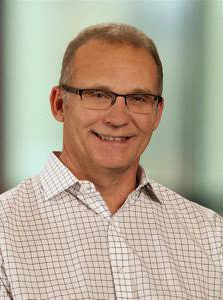Surendar Balakrishnan speaks to Al Fullerton of Trane, who elaborates on the company’s direction vis-à-vis refrigerants
Could you talk us through the direction Trane is taking with refrigerants, especially after Kigali, where policymakers said they’re looking at a global warming potential (GWP) of 400 as ideal to mitigate climate change from an emissions perspective?
I’ll start with our centrifugal chiller portfolio. So, those are the larger chillers, and before the agreement, we were using the refrigerant R-123, and since that time we have rolled out two new refrigerants, R-1233zd (E), which has a GWP of zero, and R-514a. We have got a window with R-1233zd (E) machines, which we could reuse in our existing portfolio. For both refrigerants, the GWP is less than one; and they are non-flammable. Another is that R-134a is used in the rotary chiller and goes up to 400 tonnes. Today’s refrigerant, for instance, is R-134a, and the next-gen refrigerant would be R-513A, and its GWP is under 700. The CenTraVac chillers have a low-pressure refrigerant and are different from the medium-pressure refrigerant chillers. The medium-pressure refrigerant chillers go from R-134a to R-513a. And for the R-513a, the GWP is under 700, so we would probably have to go one more time, but today we have 700, which is a big step forward from where we are.

Al Fullerton, Trane
When do you plan on making the further transition?
Right now, there’s no pressure in North America to go lower. We led the way with R-513a, so in Europe, we do R-123ze, and its GWP nears zero, and that hasn’t made it here yet.
You’re saying there’s no pressure, but wouldn’t Trane want to take the initiative of going lower?
Chillers are likely to get more expensive, so we will likely have an alternative before we have to but not at this time. And right now, no competitor is selling the ‘ze’ refrigerant here in North America, so where we are active right now is with R-410a with residential units and with unitary products. It looks like California is going to help us change with some regulation, and several other states like Washington, Massachusetts, along with four others are going to ask us to go faster. And so, we have several alternatives – three of those are similar in terms of GWP. Once you get a little below 700, all are slightly flammable, which is not allowed by the Building Codes. I’d say we’re evaluating the refrigerants, and we believe the Building Codes will change in time for California, but not before that. It is a three-year cycle for them to change, and we’ll be ready for California and will make a choice between the three non-flammables and the other refrigerants under consideration. We are evaluating three non-flammables right now and will make a decision soon.
The leadership in the United States has a different opinion on climate change. How much is that influencing your research and development as a company at a national level?
It’s not affecting us, because we listen to our customers. And our customers need green alternatives. There are large companies, who are all ready to make a climate commitment. We’re going to go based on our customers and on the market.
Could you elaborate on Trane’s initiative with regard to 3D printing?
I’ve been out of project management for two years now, so what I tell you might be old, but we were using 3D printing for prototyping in design. For instance, 3D-printing a new control panel for a new product, wherein we print a new product or a new component, as opposed to ordering it.
Surendar Balakrishnan is the Editor of Climate Control Middle East magazine, and Co-Founder and Editorial Director of CPI Industry. He may be contacted at surendar@cpi-industry.com
Copyright © 2006-2025 - CPI Industry. All rights reserved.